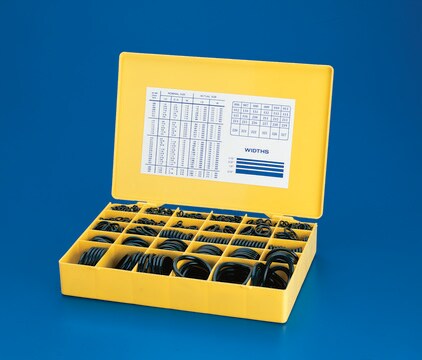W243213
Ethyl decanoate
natural, ≥98%, FCC, FG
Synonyme(s) :
Capric acid ethyl ester, Ethyl caprate
About This Item
Produits recommandés
Qualité
FG
Halal
Kosher
natural
Niveau de qualité
Agence
meets purity specifications of JECFA
Conformité réglementaire
EU Regulation 1334/2008 & 178/2002
FCC
FDA 21 CFR 117
Densité de vapeur
6.9 (vs air)
Essai
≥98%
Indice de réfraction
n20/D 1.425 (lit.)
pb
245 °C (lit.)
Densité
0.864 g/cm3
Application(s)
flavors and fragrances
Documentation
see Safety & Documentation for available documents
Allergène alimentaire
no known allergens
Propriétés organoleptiques
apple; fruity; waxy; sweet
Chaîne SMILES
CCCCCCCCCC(=O)OCC
InChI
1S/C12H24O2/c1-3-5-6-7-8-9-10-11-12(13)14-4-2/h3-11H2,1-2H3
Clé InChI
RGXWDWUGBIJHDO-UHFFFAOYSA-N
Vous recherchez des produits similaires ? Visite Guide de comparaison des produits
Catégories apparentées
Description générale
Application
- Added to the beer during the brewing process to increase its fruity and sweet aroma and improve its overall sensory properties.
- Found to be a key aroma compound in F. vesca, contributing to its fruity and sweet aroma.
Code de la classe de stockage
10 - Combustible liquids
Classe de danger pour l'eau (WGK)
WGK 2
Point d'éclair (°F)
215.6 °F - closed cup
Point d'éclair (°C)
102 °C - closed cup
Équipement de protection individuelle
Eyeshields, Gloves, multi-purpose combination respirator cartridge (US)
Faites votre choix parmi les versions les plus récentes :
Déjà en possession de ce produit ?
Retrouvez la documentation relative aux produits que vous avez récemment achetés dans la Bibliothèque de documents.
Global Trade Item Number
| Référence | GTIN |
|---|---|
| W243213-100G-K | 4061837876516 |
| W243213-1KG | |
| W243213-4KG | |
| W243213-9KG | |
| W243213-SAMPLE-K | 4061837876547 |
| W243213-100G | |
| W243213-1KG-K | 4061837876523 |
| W243213-4KG-K | 4061837876530 |
| W243213-9KG-K | |
| W243213-SAMPLE |
Notre équipe de scientifiques dispose d'une expérience dans tous les secteurs de la recherche, notamment en sciences de la vie, science des matériaux, synthèse chimique, chromatographie, analyse et dans de nombreux autres domaines..
Contacter notre Service technique







